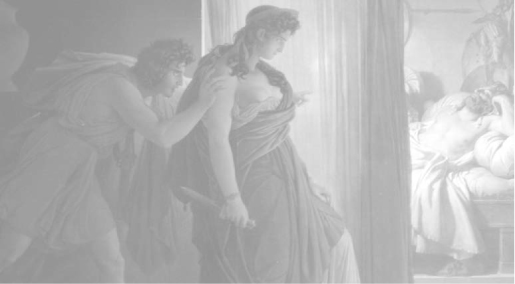Classical Greek MythologyWhat Do We Mean By Classical Greece As Opposed to Mycenaean or Archaic Greece? |
What role did mythology play in the Classical Greek period? |
Typically, when people speak of Classical Greece, they refer to a period of the cultural dominance of the city-state of Athens, beginning with the end of a tyrant-based political system in 510 B.C.E. and ending with the death of Alexander the Great in 323 B.C.E. In 507 B.C.E. a new system of government was established in Athens called demokratia (democracy), in which all male citizens of eighteen years and older could participate in a governing assembly. One of the first concerns of the Athenians under the new system was a series of wars with Persia, which finally ended with a victory for Athens and allied Greek city-states in 479 B.C.E. The Athenians then led and dominated an alliance called the Delian League beginning in 478 B.C.E. In many ways Athens took unfair advantage of its leadership position, using tribute monies for its own aggrandizement, thus arousing the enmity of Sparta and other city-states. In the 450s, Pericles, the elected general and leader of Athens, used these funds to build up and encourage the cultural activities and monuments that we associate with Greek civilization. During his period of influence the Parthenon on the Acropolis was built in honor of the city’s patron deity, Athene. Many other temples were constructed. Historians such as Herodotus and Thucydides wrote. The great Socrates spoke out on philosophical and ethical issues. Medicine developed under Hippocrates, the “father of western medicine.” Doctors to this day swear allegiance to a version of the “Hippocratic Oath,” concerned with the proper moral approach to medicine. Sculptors, led by Phidias (593–130 B.C.E.) literally redecorated Athens with statues of the Olympian gods. The religious dramatic festival in honor of Dionysos—the City Dionysia—founded earlier by the enlightened tyrant Pisistratus (600–527 B.C.E.), flourished with the work of the great playwrights Aeschylus, Sophocles, and Euripides. The fifth century B.C.E. and part of the fourth was the Golden Age of Athens and of Greece. In addition to the creative geniuses noted above, a survey of Classical Greece would include the post-Periclean philosophers Plato (424–347 B.C.E.) and Aristotle (384–322 B.C.E.), the sculptor Praxiteles (400–330 B.C.E.), and many others who have deeply influenced western culture.
As successful as Periclean Athens was, its arrogant treatment of allied city-states led to not only the eventual breakup of the Delian League but to a long series of wars among the city-states—especially between Sparta and Athens. The so-called Peloponnesian War (431–404 B.C.E.) ended with a victory for Sparta. Nonetheless, Athens reigned supreme and its cultural influence lasted well into the fourth century B.C.E., when Philip II of Macedonia in 345 B.C.E. established nominal control over the city. He was followed by his son Alexander in whose empire Athens was included. Alexander died in Babylon in 323 B.C.E. After years of rebellion and confusion, Athens and Greece as a whole came under Roman rule.
The inhabitants of Athens or any other Greek city-state during the Classical period would have been literally surrounded by images of and writings about Greek mythology, much as citizens of most European and North and South American cities today are constantly made aware of Christian stories, which are frequently quoted from the Bible and depicted in churches and museum paintings. Stories of Greek mythology were, to the Greeks, religious stories explaining the origin of life and the relationship between humanity and the divine.
By the end of the Archaic period, perhaps thanks to Pisistratus, the Homeric epics and Hesiod’s works had been written down and collated in essentially their present form so that they became more widely available. By the fifth century B.C.E. the Iliad and the Odyssey were considered national epics and were taught in schools. The creation story in the Theogony of Hesiod had, by the sixth century B.C.E., been accorded as much reverence as the biblical book of Genesis is accorded by Jews, Christians, and Muslims today. From the Archaic period on, vase paintings were dominated by scenes from famous myths, statues of gods by Phidias and, later, Praxiteles and many other artists were present everywhere, as were the great temples to various deities. Herms, small rectangular posts topped with the head of and sometimes the phallus of the god Hermes, were ubiquitous as boundary markers. The temples, such as the Parthenon in Athens, were decorated with elaborate friezes depicting scenes from Greek myths. Some students would have been lucky enough to attend and participate in serious and sometimes skeptical discussions of the gods with the great Socrates or later with Plato and Aristotle. Poetry readers would have encountered stories of the gods in lyrics by Pindar (522–443 B.C.E.) and Bacchylides (c.518–128 B.C.E.), and by Simonides (556–468 B.C.E.). For some time, the poems of the sixth-century poet Sappho of Lesbos (c.630–570 B.C.E.) had been available. More famous now for her poems about the love between women, Sappho had compiled retellings of many of the Homeric stories. People interested in historical understandings of myth could have read Herodotus’s comparisons of Greek and Egyptian deities or the somewhat more skeptical comments of Thucydides on Homer. For citizens of Athens, the annual festival of the City Dionysia, featuring elaborate processions centered on Dionysos and made famous by the plays of such geniuses as Aeschylus, Sophocles, Euripides, and Aristophanes, would have been impossible to ignore. In short, it is as difficult to separate life in Classical Greece from what we think of as Greek mythology as it would be to separate life in Jerusalem from Jewish, Christian, and Islamic stories.

